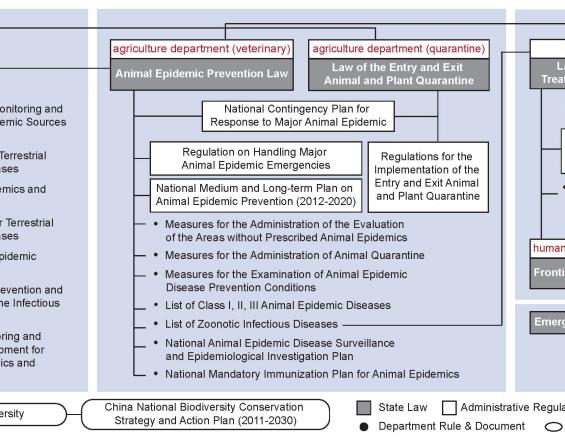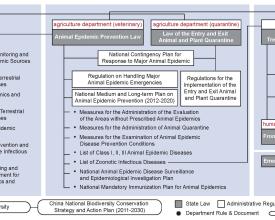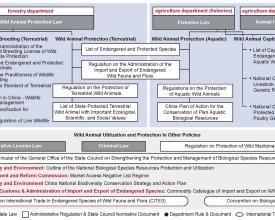Examine gaps and One Health opportunities in wildlife and zoonotic disease risk management in China

Addressing the public health, food production, and conservation aspects of wildlife epidemics and zoonotic disease threats requires actions from multiple sectors across the different interfaces where wildlife, domestic animal, and human contact may occur. To better understand the role of different agencies in wildlife and zoonotic disease management in China, a stakeholder mapping and policy review was undertaken. This work reviewed the current laws and regulations, government reports and policy documents, and existing literature on zoonotic disease preparedness and prevention across the forestry, agriculture, and public health authorities in China, to articulate the current landscape of potential risks, existing mandates, and gaps. A key finding was that responsibilities for zoonotic disease management are currently fragmented across agencies.
Impacts
This review indicates that there are existing scopes and operations in China for wild animal management and zoonotic disease risk monitoring. However, the coverage of diseases or pathogens with zoonotic risk, as well as the management of potential wild animal hosts to prevent disease emergence, are limited in the current system. Proactive screening of zoonotic diseases or emerging pathogens with zoonotic potential in wild animal populations is often overlooked by the system; instead, it relies heavily on the research community which would require additional mechanisms for integration into government monitoring and policy. The gaps in the completeness of mandates and enforcement of wild animal management in the at-risk scenarios of wild animal utilization remain a concern for emerging zoonotic disease prevention and preparedness. The lack of a cohesive strategy has resulted in data gaps that make it challenging to precisely identify the practices and aspects of disease risks in the wildlife animal trade value chains. The identified gaps provide a basis for authorities to review their mandates and systems and contribute to an overall national strategy to advance One Health collaboration across government and non-government stakeholders to optimize monitoring and surveillance, risk management, and emergency responses to known and novel zoonotic threats, and support COVID-19 recovery efforts.

